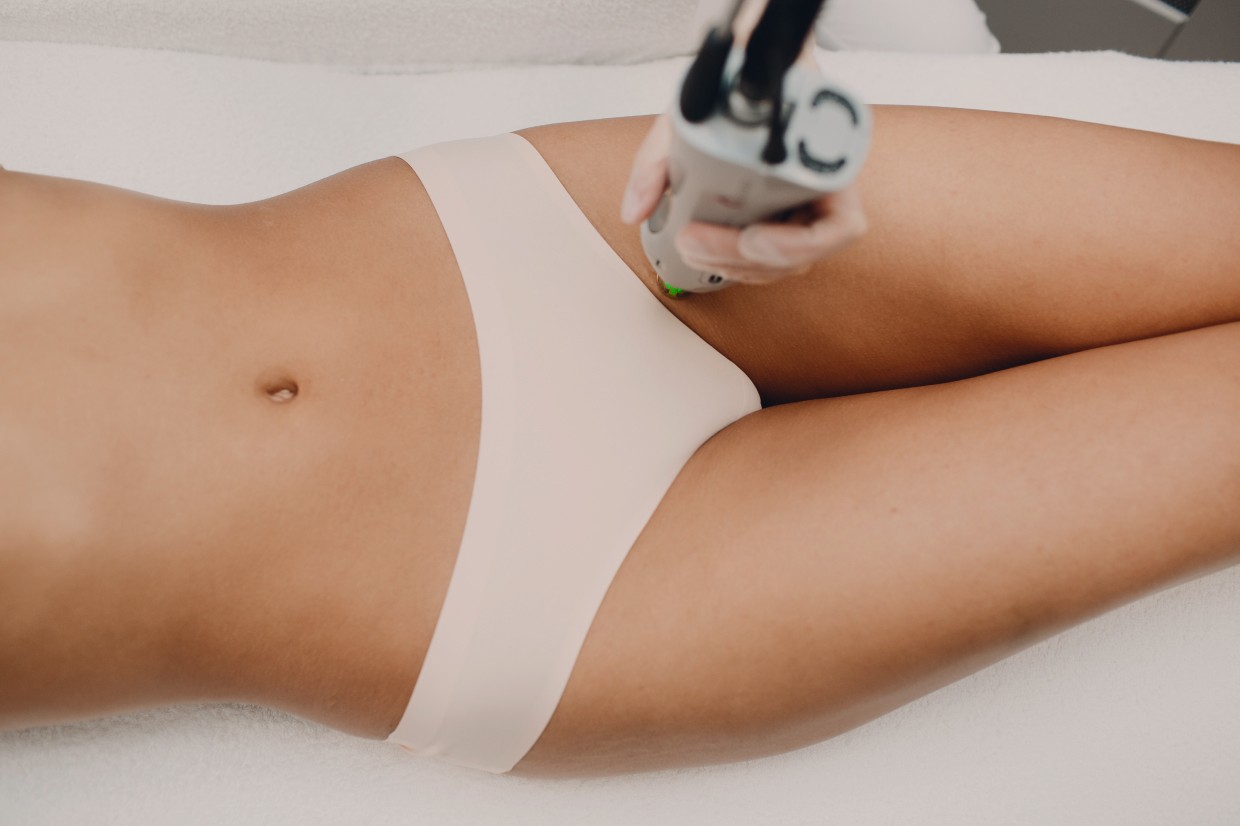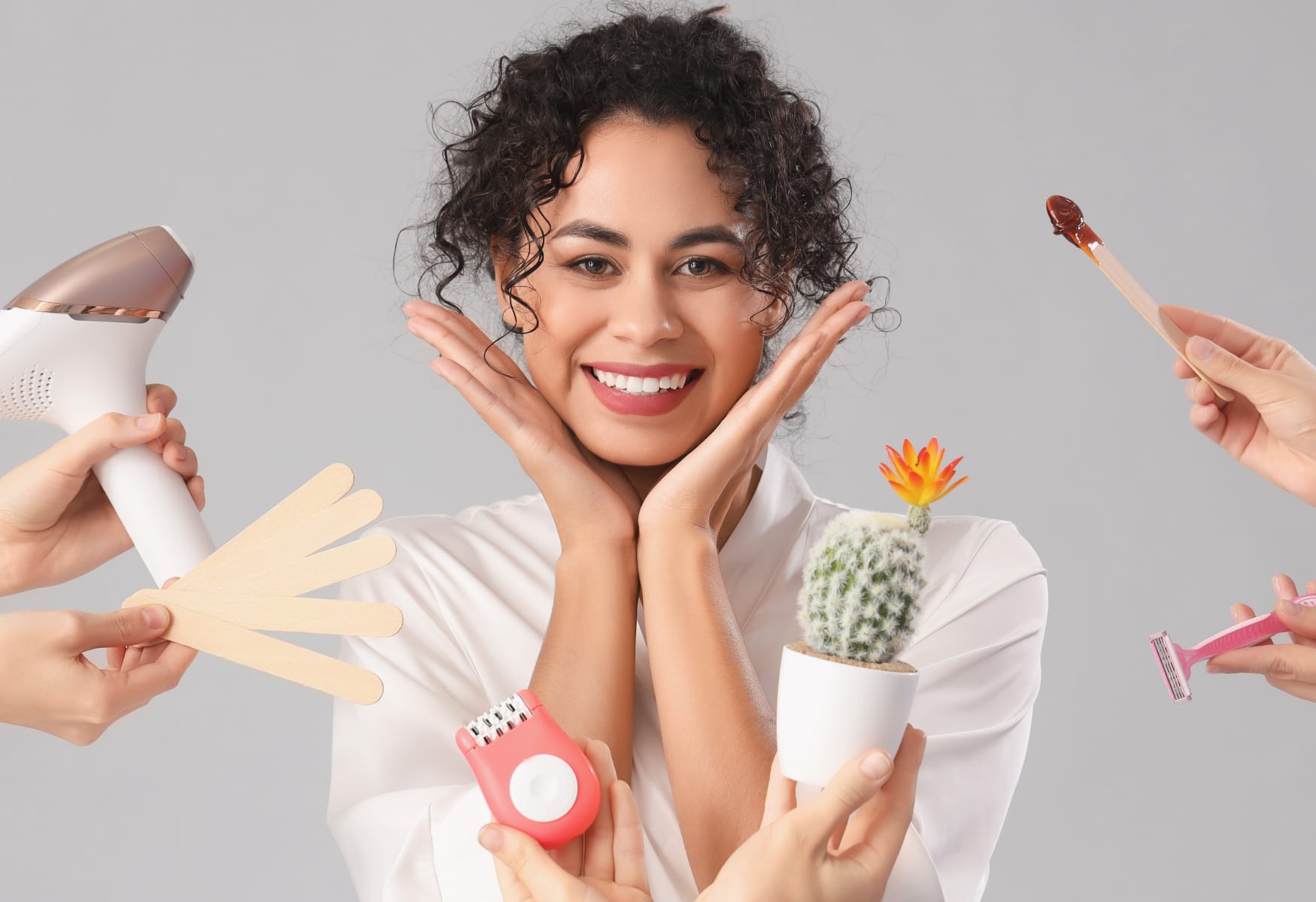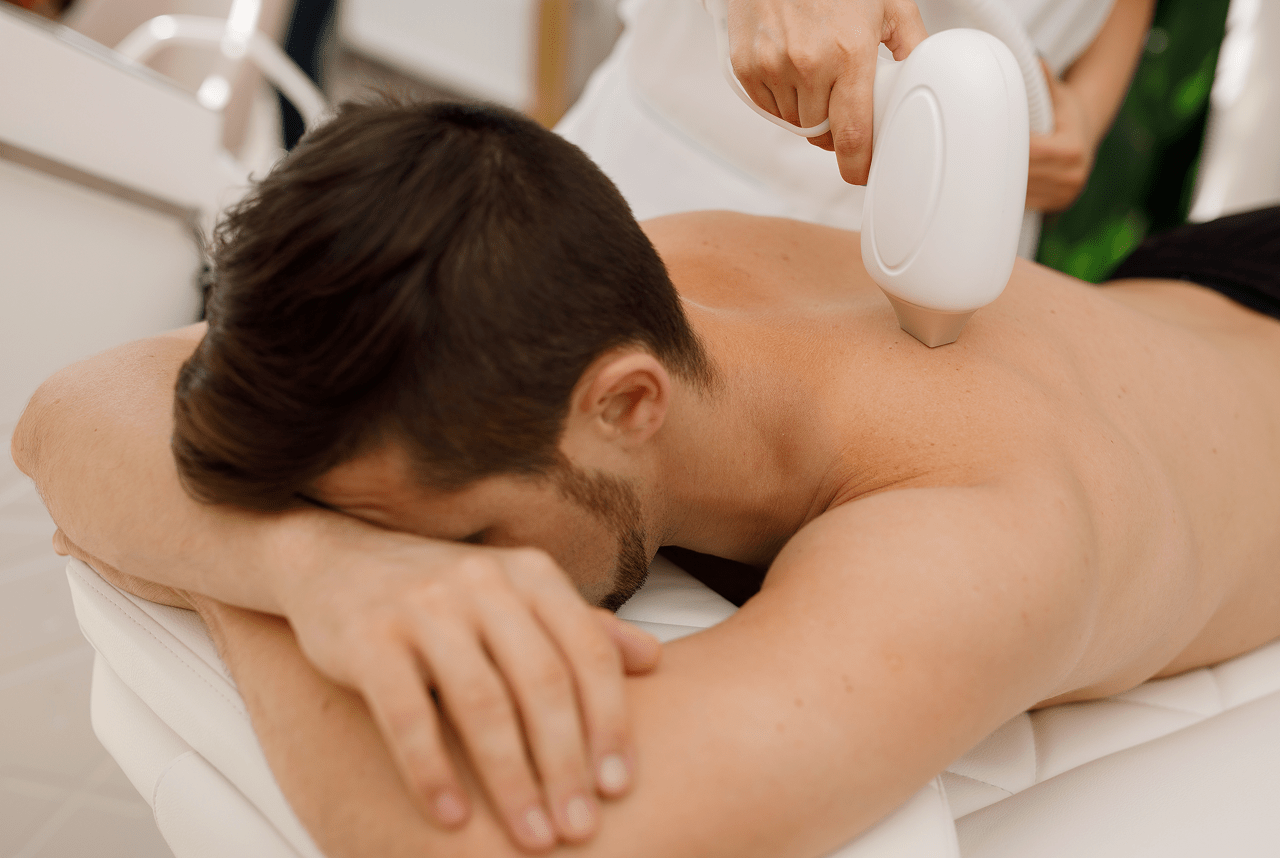Ingrown hairs, an unpleasant phenomenon where a hair does not grow above the skin’s surface, can cause pain, inflammation, pimples, itching, and irritation. In extreme cases, it can lead to more serious complications, such as infection or the formation of dark spots.
Obsah
The fight against ingrown hairs can involve various hair removal methods. Let’s take a look at the possible causes of ingrown hairs, but most importantly, how to effectively address this issue!
Do you want to remove ingrown hairs permanently? Laser hair removal is the safest, most effective, and longest-lasting method for combating unwanted hair. Book your appointment at our salon today!
What causes ingrown hairs on the legs and other areas?
- There are several causes of ingrown hairs, but the most common is shaving, or rather poor shaving technique. If you shave the hair against the direction of its growth, the sharp end of the hair can dig into the skin and then begin to grow into it. This is why you need to be careful and methodical when shaving.
- Another reason for ingrown hairs may be related to neglecting proper skin care. If you don't hydrate your skin enough or neglect exfoliation, dry and dead skin cells can create a barrier, preventing healthy hair growth. As a result, the hairs may tend to grow inward.
- In some cases, wearing tight clothing (such as swimwear) can also contribute to ingrown hairs.
- Lastly, your genetics can also play a role. Some people, especially those with naturally curly hair, are more prone to ingrown hairs or even suffer from what is known as pseudofolliculitis.
You can prevent ingrown hairs in the groin area and elsewhere on your body by shaving properly
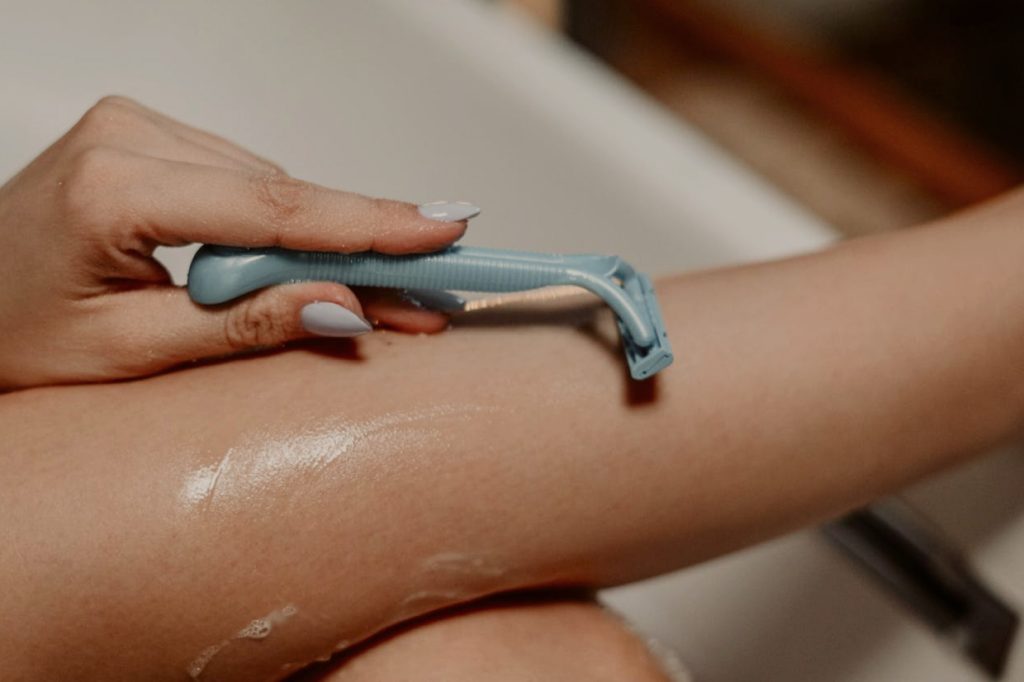
- Always shave with a sharp razor. Many people try to save money and use old and dull razors long after their lifetime is over. But with a dull razor, skin irritation occurs, not to mention the effectiveness and lengthiness of such a shave. Skin shaved with a dull razor is a perfect breeding ground for ingrown hairs. Clean and sharp razors or shavers are therefore a must.
- Shave in the direction of hair growth. As mentioned earlier, shaving in the direction of the hair can cause the end of the hair to dig into the skin where it starts to grow. Even when shaving.
- Shave more often, ideally twice a week.
- Do not shave your skin dry. Before shaving, rinse it with warm water and ideally coat it with a good quality shaving gel.
Proper hydration and skin care can also help prevent ingrown hairs
Our skin constantly renews itself, with some cells forming and others dying off. That’s why regular exfoliation is essential to remove these dead cells.
Good exfoliation promotes blood circulation to the skin, helping it regenerate and clear away excess oil. Removing dry and dead skin cells also allows hair to grow correctly, without any obstacles in its path.
In addition to exfoliation, you must not forget to keep your skin well-hydrated. Special body creams, butters, and other products provide the necessary moisture and nutrients and should be an integral part of your skincare routine.
At the same time, don’t forget to stay hydrated by drinking enough water and following a balanced diet. The risk of ingrown hairs on healthy skin is much lower this way.
Preparations against hair ingrowth
Salicylic acid creams
Salicylic acid is a beta-hydroxy acid (BHA) with exfoliating properties. Creams containing this ingredient are effective at removing dead skin cells and clearing inflamed hair follicles. This helps in preventing ingrown hairs.
Exfoliating products
Exfoliating tools, such as scrubs, sponges, or brushes, are meant to remove dead skin cells and improve skin texture. Regular use of exfoliating products can reduce the risk of ingrown hairs.
Retinoids
Retinoids are vitamin A derivatives with many benefits, including improving skin cell regeneration and clearing inflamed hair follicles. Using retinoids can help prevent and treat ingrown hairs.
Special gels and oils
These products are designed to moisturize the skin and reduce irritation caused by shaving or epilation. They typically contain hydrating and soothing ingredients that protect the skin and lower the risk of ingrown hairs.
Using these products can be an effective way to care for your skin and minimize the issue of ingrown hairs. However, it’s important to use them correctly and consult a specialist if you have sensitive or problematic skin.
What are the best methods against ingrown hairs?
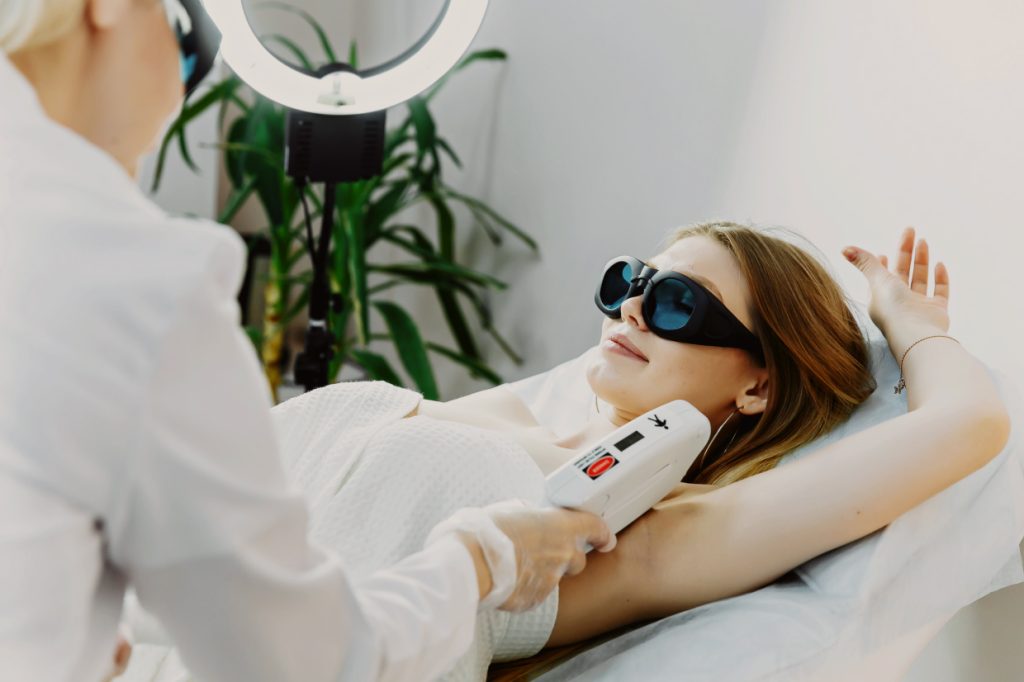
There are many different methods developed to help minimize or completely eliminate ingrown hairs. In this section, we will introduce a few of these methods that are available.
Each has its own characteristics and effectiveness, and choosing the right method can depend on individual preferences, skin type, and the area of the body you wish to treat.
Laser hair removal
This method is often considered the most effective way to permanently remove unwanted hair. Laser hair removal works by using laser beams that penetrate the hair follicles, weakening or stopping hair growth. This greatly reduces the risk of ingrown hairs.
IPL (Intense Pulsed Light)
IPL is similar to laser hair removal but uses a broad spectrum of light. This method is also effective in permanently reducing hair growth and minimizing ingrown hairs.
Electrolysis
Electrolysis involves inserting a thin needle into each hair follicle, then applying an electric current that destroys the follicle. This method is permanent but can be time-consuming since it treats individual hairs.
Mechanical hair removal
This includes traditional methods like shaving, waxing, or using an epilator. These methods can contribute to ingrown hairs if not performed with proper technique and skin preparation.
Other options (e.g., sugaring)
Sugaring is a method where hair is removed manually using a special sugar paste. This method can be gentler on the skin compared to shaving or waxing.
Each of these methods has its pros and cons, and which one to choose depends on your individual needs and preferences. It is important to consult a skincare specialist to find the most suitable method for your situation.
What to do if ingrown hairs already appear?
Removing ingrown hairs is not pleasant and prevention is always better than cure. However, once ingrown hairs have appeared, the following tips will definitely come in handy when removing them:
- Don't try to push the ingrown hair out with your fingers. Squeezing pimples and pushing out ingrown hairs with your fingers can cause irritation and infection. If the ingrown hair is visible on the surface of the skin, you can use a disinfected needle or tweezers to gently pull it out - but only straighten the hair itself, don't try to pull it out completely.
- Use a warm compress before trying to pull out the ingrown hair. Soak a clean towel or gauze in warm water and apply it to the affected area for a few minutes. This will soften the skin and make it easier to pull out the hair.
- There are special anti-hair ingrowth peeling creams and gels on the market specifically designed for this purpose. These products contain ingredients that help soften the skin and loosen ingrown hairs.
- If ingrown hairs are very painful or at risk of infection, you should seek medical attention. The doctor can make an incision and remove the ingrown hair.
Laser hair removal is a permanent solution for ingrown hairs
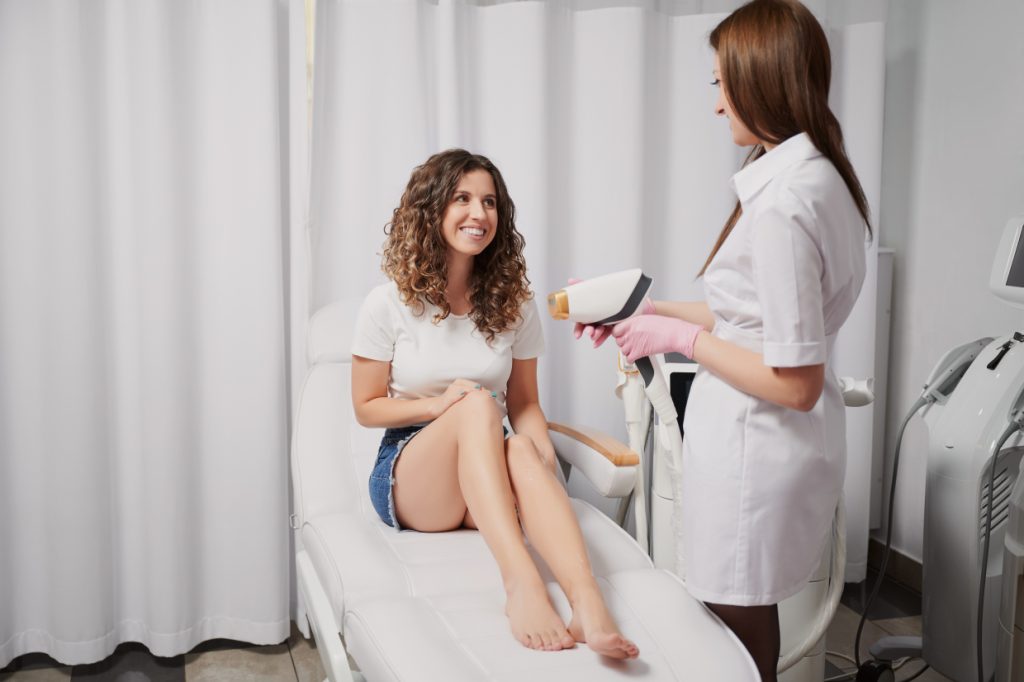
If you’ve been struggling with ingrown hairs for a long time, with new ones appearing after every shave, and it feels like the problem just won’t go away, there’s another solution you can try.
Laser hair removal can permanently remove hair without it growing back within a few weeks. During the procedure, the laser beam penetrates the hair down to the root, which is damaged by thermal energy to the point that it stops growing. This means one thing – a hair that doesn’t grow can’t become ingrown.

